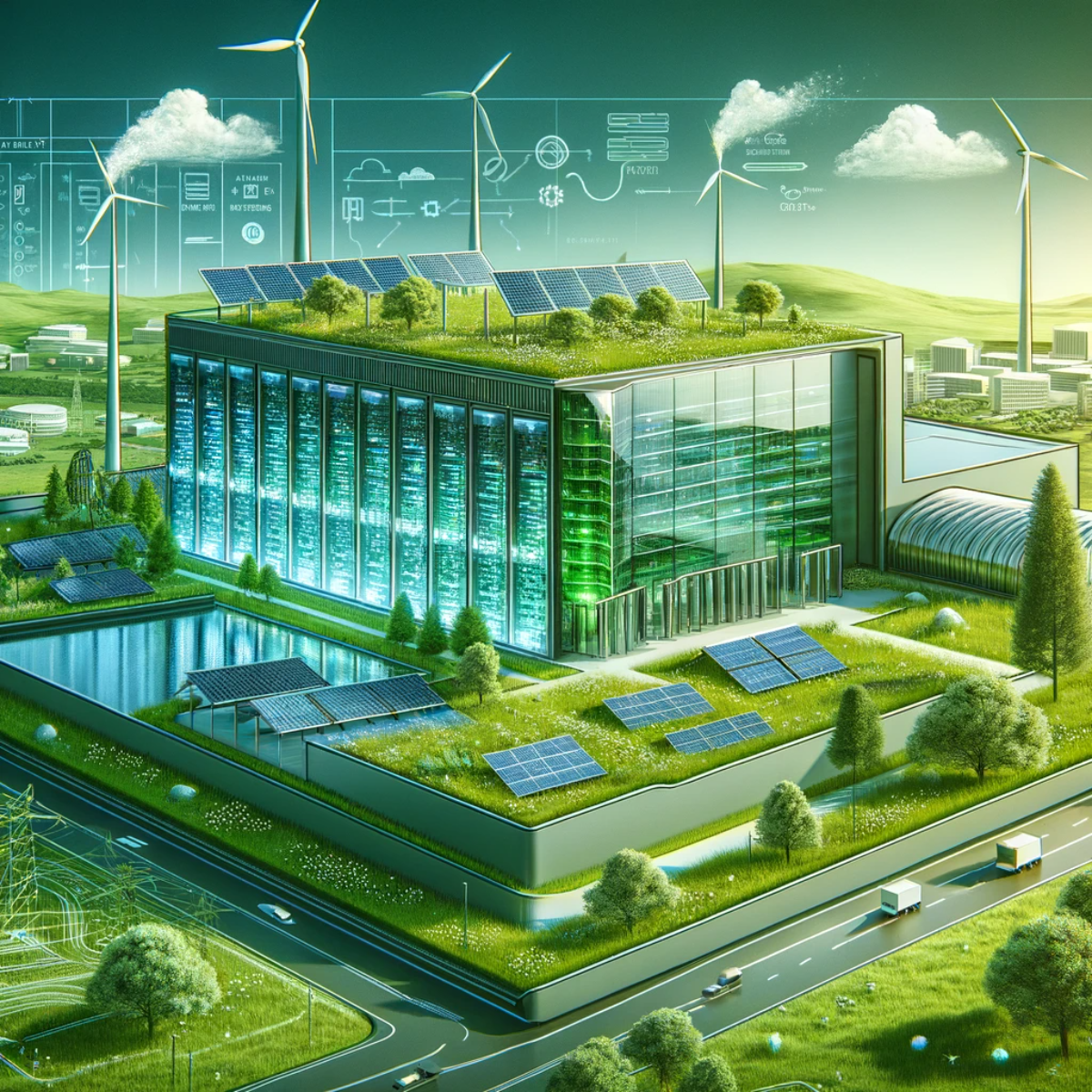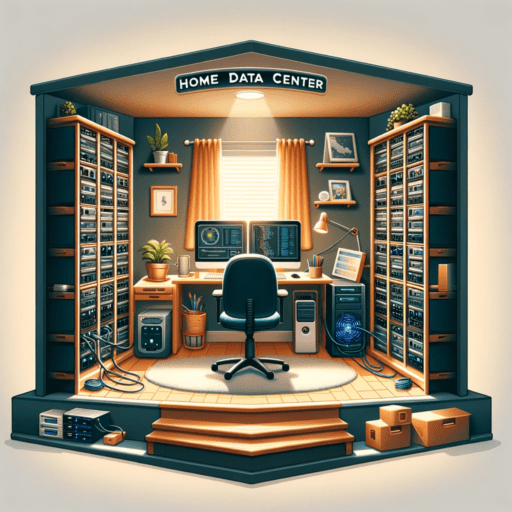Green data center design refers to the practice of designing and operating data centers in an environmentally sustainable manner. It involves implementing strategies and technologies that minimize the environmental impact of data centers, such as reducing energy consumption, conserving water, using sustainable materials, and implementing renewable energy sources.
In today’s digital age, data centers play a crucial role in supporting our increasingly connected world. However, the rapid growth of data centers has also led to significant energy consumption and environmental impact. Therefore, it is essential to prioritize sustainable practices in data center design to minimize their carbon footprint and contribute to a more sustainable future.
Key Takeaways
- Green data center design focuses on sustainability and reducing environmental impact.
- Sustainable architecture principles can be applied to data center design to improve energy efficiency and reduce waste.
- Energy efficiency is a key component of green data center design, with strategies such as virtualization and power management.
- Water conservation strategies, such as using recycled water and implementing efficient cooling systems, can also contribute to sustainable data center design.
- Sustainable materials and building techniques, such as using renewable materials and designing for natural lighting, can further reduce environmental impact in data center design.
Understanding Sustainable Architecture Principles for Data Centers
Sustainable architecture principles are a set of guidelines that aim to minimize the negative environmental impact of buildings while maximizing their efficiency and functionality. These principles can be applied to data center design to create more sustainable and efficient facilities.
One key principle is energy efficiency. Data centers are notorious for their high energy consumption, so it is crucial to design them with energy efficiency in mind. This can be achieved through various strategies such as using energy-efficient equipment, optimizing cooling systems, and implementing virtualization technologies.
Another principle is water conservation. Data centers require a significant amount of water for cooling purposes, so it is important to implement strategies to reduce water usage. This can include using water-efficient cooling systems, implementing rainwater harvesting systems, and recycling water for non-potable uses.
Energy Efficiency in Green Data Center Design
Energy efficiency is a critical aspect of green data center design. Data centers consume a substantial amount of electricity to power their servers, cooling systems, and other equipment. Therefore, reducing energy consumption can have a significant impact on both the environmental footprint and operational costs of data centers.
There are several strategies that can be employed to improve energy efficiency in data centers. One approach is to use energy-efficient equipment such as servers, storage devices, and networking equipment. These devices are designed to consume less power while still providing the necessary computing capabilities.
Another strategy is to optimize cooling systems. Data centers generate a significant amount of heat, and cooling is essential to maintain optimal operating conditions. By implementing efficient cooling systems, such as hot aisle/cold aisle containment, economizers, and liquid cooling technologies, data centers can reduce their energy consumption for cooling purposes.
Additionally, virtualization technologies can be used to consolidate servers and reduce the overall number of physical machines required. This not only saves energy but also reduces the physical footprint of the data center.
Water Conservation Strategies for Sustainable Data Centers
Water conservation is another important aspect of green data center design. Data centers require a significant amount of water for cooling purposes, and reducing water usage can help minimize their environmental impact.
One strategy for water conservation is to use water-efficient cooling systems. Traditional cooling systems, such as cooling towers, can be replaced with more efficient alternatives like air-side economizers or liquid cooling technologies. These systems use less water or eliminate the need for water altogether.
Another approach is to implement rainwater harvesting systems. Rainwater can be collected and used for non-potable purposes such as irrigation or toilet flushing. By utilizing rainwater, data centers can reduce their reliance on freshwater sources and conserve water resources.
Furthermore, implementing water recycling systems can help reduce water usage in data centers. Water used for cooling can be treated and reused instead of being discharged as wastewater. This not only conserves water but also reduces the strain on local water supplies.
Sustainable Materials and Building Techniques for Data Centers
Using sustainable materials and building techniques is another important aspect of green data center design. By choosing environmentally friendly materials and construction methods, data centers can minimize their environmental impact and contribute to a more sustainable future.
One key consideration is the use of recycled or renewable materials. For example, using recycled steel or concrete can help reduce the demand for virgin materials and minimize the carbon footprint of the data center. Additionally, using renewable materials such as bamboo or cork for flooring or wall panels can further enhance the sustainability of the facility.
Another aspect to consider is the construction process itself. Implementing sustainable construction practices, such as minimizing waste, recycling construction materials, and using energy-efficient construction techniques, can help reduce the environmental impact of building a data center.
Furthermore, incorporating green building certifications, such as LEED (Leadership in Energy and Environmental Design), can provide a framework for sustainable design and construction. These certifications evaluate various aspects of a building’s sustainability, including energy efficiency, water conservation, and indoor environmental quality.
Implementing Renewable Energy Sources in Data Center Design
Integrating renewable energy sources into data center design is a crucial step towards achieving sustainability. By harnessing clean and renewable sources of energy, data centers can significantly reduce their carbon footprint and reliance on fossil fuels.
There are several renewable energy sources that can be integrated into data center design. Solar power is one of the most common options, as it can be easily installed on rooftops or in open areas surrounding the data center. Solar panels can generate electricity to power the facility during daylight hours and can be combined with battery storage systems to provide power during nighttime or cloudy periods.
Wind power is another viable option for data centers located in areas with consistent wind patterns. Wind turbines can be installed on-site or in nearby locations to generate electricity. Like solar power, wind power can be combined with battery storage systems to ensure a continuous power supply.
Hydroelectric power is another renewable energy source that can be utilized if there is access to a nearby water source. Micro-hydro systems can be installed to generate electricity from flowing water, providing a reliable and sustainable source of power for the data center.
Optimizing Cooling and Ventilation Systems for Green Data Centers
Cooling and ventilation systems play a crucial role in data center design, as they are responsible for maintaining optimal operating conditions for the servers and other equipment. However, these systems also consume a significant amount of energy, so optimizing them for energy efficiency is essential.
One strategy for optimizing cooling and ventilation systems is to implement hot aisle/cold aisle containment. This involves segregating the hot and cold air streams to prevent mixing, which can improve cooling efficiency and reduce energy consumption.
Another approach is to use economizers, which take advantage of cool outside air to provide free cooling. By using outside air when the temperature is lower than the desired server inlet temperature, data centers can reduce their reliance on mechanical cooling systems and save energy.
Liquid cooling technologies can also be implemented to improve cooling efficiency. These systems use liquid coolant to directly cool the servers, eliminating the need for air conditioning units. Liquid cooling can be more efficient than traditional air cooling methods, as liquids have higher heat transfer capabilities.
Furthermore, implementing intelligent control systems can help optimize cooling and ventilation systems. These systems use sensors and algorithms to monitor and adjust cooling parameters based on real-time conditions, ensuring that cooling is provided only when and where it is needed.
Reducing Carbon Footprint through Sustainable Data Center Design
Reducing the carbon footprint of data centers is a crucial aspect of sustainable design. Data centers are known for their high carbon emissions due to their energy-intensive operations, so implementing strategies to minimize these emissions is essential.
One strategy is to increase energy efficiency, as mentioned earlier. By reducing energy consumption through various measures such as using energy-efficient equipment, optimizing cooling systems, and implementing virtualization technologies, data centers can significantly reduce their carbon emissions.
Another approach is to offset carbon emissions through the purchase of renewable energy credits or carbon offsets. Renewable energy credits represent the environmental attributes of renewable energy generation and can be purchased to offset the carbon emissions associated with data center operations. Carbon offsets, on the other hand, represent investments in projects that reduce or remove greenhouse gas emissions, such as reforestation or renewable energy projects.
Additionally, implementing energy management systems can help monitor and optimize energy usage in data centers. These systems provide real-time data on energy consumption and can identify areas for improvement, allowing data center operators to make informed decisions to reduce their carbon footprint.
Best Practices for Waste Reduction and Recycling in Data Centers
Waste reduction and recycling are important aspects of sustainable data center design. Data centers generate a significant amount of waste, including electronic waste (e-waste), packaging materials, and other materials. Implementing best practices for waste reduction and recycling can help minimize the environmental impact of data centers.
One key practice is to implement a comprehensive e-waste management program. This involves properly disposing of end-of-life IT equipment, such as servers, storage devices, and networking equipment. E-waste should be recycled or disposed of in an environmentally responsible manner to prevent hazardous materials from entering the environment.
Another practice is to minimize packaging waste. Data centers receive a large amount of equipment and supplies that are often packaged in excessive amounts of plastic and cardboard. By working with suppliers to reduce packaging waste or opting for more sustainable packaging materials, data centers can minimize their waste generation.
Implementing recycling programs for other materials such as paper, plastic, and metal can also help reduce waste. Data centers can provide designated recycling bins throughout the facility and educate employees on proper recycling practices.
Furthermore, data centers can explore opportunities for reusing or repurposing materials. For example, old server racks or cabinets can be refurbished and reused instead of being discarded. This not only reduces waste but also saves resources by extending the lifespan of these materials.
Achieving LEED Certification for Green Data Center Design
LEED (Leadership in Energy and Environmental Design) certification is a globally recognized green building certification program that provides a framework for sustainable design and construction. Achieving LEED certification for data center design can demonstrate a commitment to sustainability and provide numerous benefits.
To achieve LEED certification, data centers must meet specific criteria in various categories, including energy efficiency, water conservation, materials and resources, indoor environmental quality, and innovation in design. By incorporating sustainable practices in these areas, data centers can earn points towards certification.
Some strategies for achieving LEED certification in data center design include using energy-efficient equipment, implementing water-efficient cooling systems, using sustainable materials, optimizing indoor air quality, and implementing renewable energy sources.
LEED certification not only demonstrates a commitment to sustainability but also provides tangible benefits such as lower operating costs, improved occupant comfort and productivity, and enhanced marketability.
In conclusion, green data center design is essential for minimizing the environmental impact of data centers and contributing to a more sustainable future. By implementing sustainable practices such as energy efficiency, water conservation, the use of sustainable materials, renewable energy integration, optimization of cooling systems, waste reduction and recycling, and achieving LEED certification, data centers can significantly reduce their carbon footprint and operate in a more environmentally responsible manner. It is crucial for data center operators and designers to prioritize sustainability in their practices to ensure a more sustainable and resilient digital infrastructure.
If you’re interested in sustainable architecture principles for data centers, you may also want to check out this related article on “The Evolution of Data Centers: Past, Present, and Future.” This article explores the history and development of data centers, as well as the emerging trends and technologies shaping their future. It provides valuable insights into how data centers have evolved to become more efficient, environmentally friendly, and sustainable. Read more






